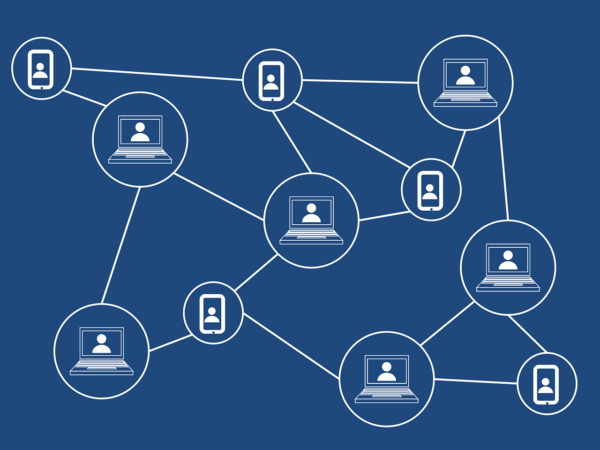
Tumisu / Pixabay
Years from now, we’ll look back on 2020 as a milestone year for the financial services sector. While it’s still too early to assess the overall fallout from the COVID-19 pandemic, the crisis has already acted as a radical catalyst in the industry. The global fintech market is expected to achieve a CAGR of 20% over the next five years, reaching a total value of more than $ 300 billion by 2025. It’s a period of unprecedented rapid growth, primarily brought about by investment in game-changing technologies to help banks and firms adapt to the so-called “new normal.”
Banks and financial services providers have been the vanguards of “convenient technology” for a number of years. We know that customers prefer omnichannel interactions. A seamless digital omnichannel experience drives customer loyalty, increases brand engagement, and creates cost-savings. Now, more than ever, banks will be looking to hang onto that hard-won loyalty as the digital disruptors snap at their heels.
The fintech sector is definitively driving the disruption, aided by key regulatory changes and a customer base that’s more than ready for digital. Infostretch is working with financial institutions and digital challengers alike to help them take advantage of the trends that are shaping the industry. In recognition of our standing in this space, NelsonHall described Infostretch as a “major player” in a recent industry report.
Below is Infostretch’s take on the major shifts that financial services companies need to prepare for now in order to stay competitive in the future.
Digital wallets and contactless payments
Even prior to the pandemic, contactless payments were enjoying a steady increase throughout the world. Now, as retail outlets and restaurants emerge in their new, COVID-safe state, they’re going to be doing everything they can to limit unnecessary contact and adhere to social distancing measures. Even the World Health Organization has strongly advised against the use of physical cash where possible. Consumers appear to be heeding the advice, with more than 50% of Americans now preferring to use digital wallets and contactless cards wherever possible. Of course, this technology isn’t new, but its rapid uptake could be a sign of things to come.
2020 could very well be the year that accelerates our move toward a cashless society.
Secure, verified and traceable transactions
Where there are digital transactions, there are security concerns. As banks seek to accelerate their transformation to digital, these security concerns are going to increase tenfold. Even before the pandemic, 90% of banks were actively exploring blockchain as a means of safely transmitting data in a seamless, cost-effective way. Blockchain, a fully networked “ledger” of transactions, is equally and anonymously accessible by every single one of its users. Infostretch’s digital banking clients are actively using blockchain to streamline software delivery processes and make them more agile, collaborative, and secure. Decentralizing the ledger in this way can lead to faster clearances on payments, reduced fees, smaller operational costs, and, crucially, much tighter security.
24/7 banking killing off bank branches
Digital banks have been exploring new ways to engage with customers and adapt services for some time now, but the drive for differentiation just went into a new gear. As early as March, JPMorgan Chase & Co. announced that it was closing more than 1,000 branches across the US due to the coronavirus pandemic. A week later, Capital One followed suit, closing more than half of its branches in New York City. While not entirely obsolete, bank branches have been losing relevance for some time now. Younger generations in particular are far more likely to do the vast majority of their banking online, and digital advances in AI, biometrics and cloud are enabling customers to perform all the banking operations they need from their smartphone or desktop.
Biometrics: enabling frictionless payments?
How many of you reading this have accessed your mobile banking app using your fingerprint? A few years ago, that sentence might have seemed like pure sci-fi, but the technology is here, and it’s already happening. Biometrics like fingerprint scanning, facial ID, and voice recognition are likely to play an increasingly prominent role as the financial services sector becomes more digitized. Harnessing biometrics effectively is an important consideration for many financial services firms looking to streamline the customer experience. Could biometric technology be the answer to a frictionless, seamless customer experience? It may not be perfect yet, but it’s the ultimate marriage of security and convenience, and there’s little doubt that fintech will be the driving force behind its increased use.
AI and big data – for everything
Artificial intelligence already plays an indispensable role in helping banks and financial firms operate securely and efficiently. For instance, AI algorithms are frequently used to assess the credit-worthiness of borrowers or detect fraudulent activity. Big data, combined with ML and cognitive computing technologies, will play an increasingly sophisticated role in assessing risk and driving decision-making. AI is also the driving force behind another huge trend in financial services and beyond: robotic process automation, which is automating tasks and process across all areas. Not only is it helping firms save costs, but RPA also reduces the errors inherent in manual-driven tasks. As ML and NLP technologies improve, the level of tasks that RPA can handle will also advance.
As digitization continues in a post-COVID world, expect to see heavier use of AI at a “front of house” level, such as the development of chatbots to guide and serve customers with things like insurance claims or mortgage applications.
Opening up banking
Open banking – the major regulatory move that began a couple of years ago – has the potential to shift the power from big banks to new-age players and, ultimately, to consumers. It encourages competition and creates new opportunities for innovative players to emerge. Open banking regulations aren’t new, but their ramifications are still being felt as digital banks and other financial services companies race to innovate their offerings to take full advantage of its potential. The strength of an organization’s customer loyalty, brand engagement, and user experience may soon trump an institution’s traditional record in delivering financial services.
Infostretch is at the forefront helping financial services companies looking to rebuild their IT foundations, respond more quickly to market dynamics, fend off competition, and build new services. Learn more about how Infostretch’s digital engineering services help financial services firms to accelerate their digital transformation, or user the form below to contact us directly.
Business & Finance Articles on Business 2 Community
(52)









